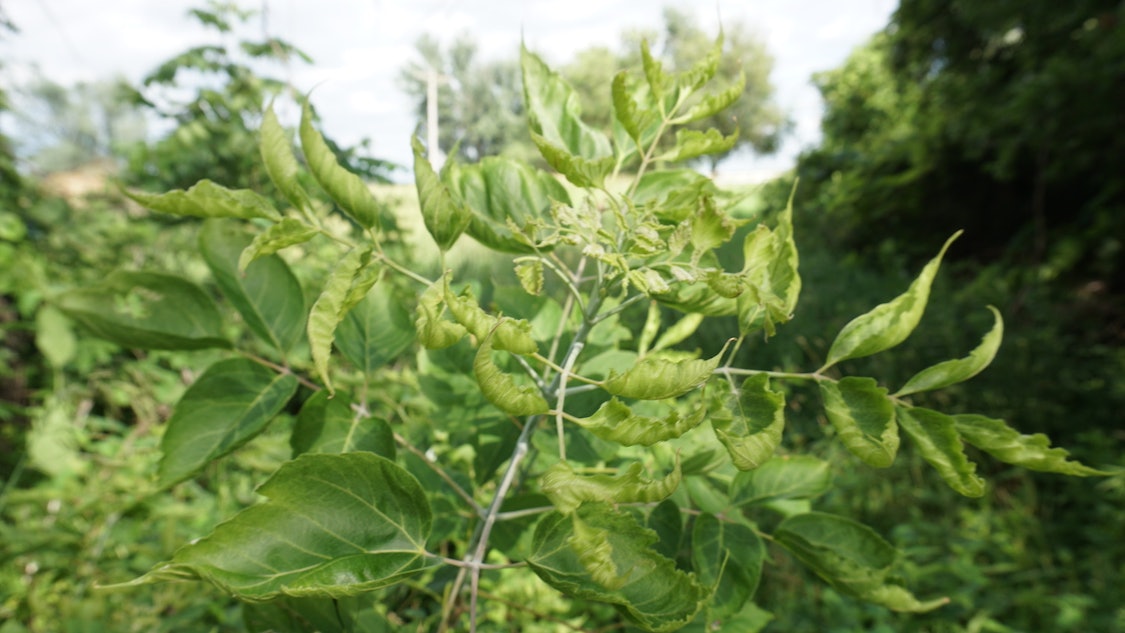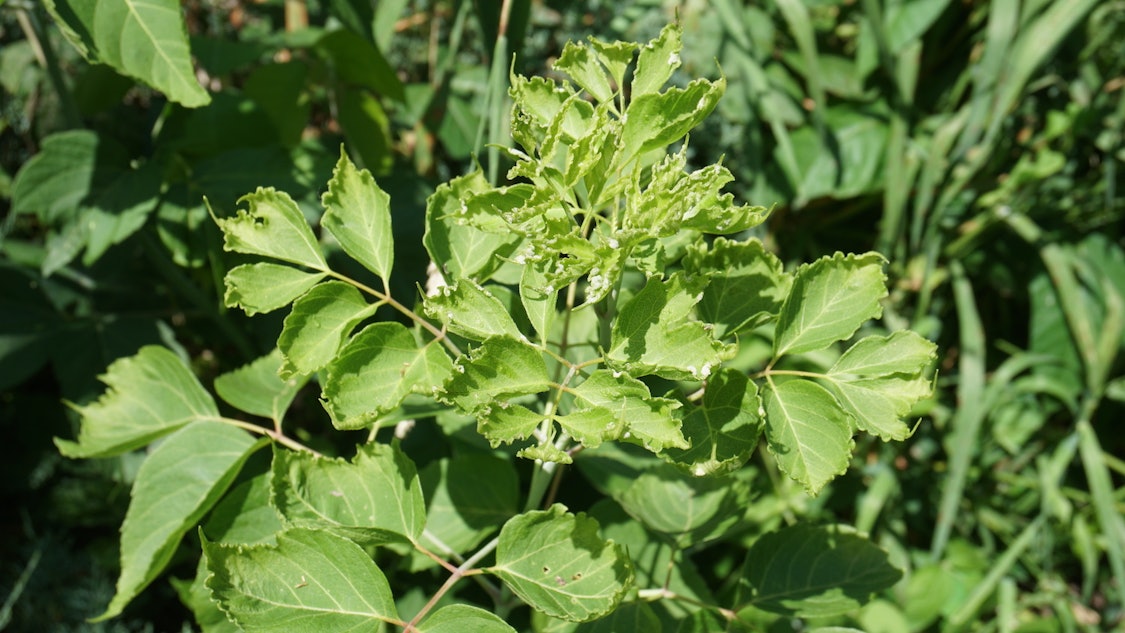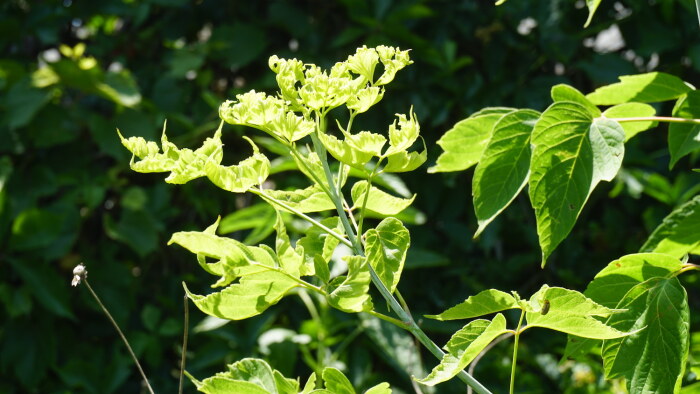Bleeding Heartland user PrairieFan is an Iowa landowner.
My boxelder trees look horrible.
The foliage on the outer branches is a sickly pale green. The leaves are twisted and stunted. Looking at other plants near my house, I see cupped and contorted leaves on trees, vines, and wildflowers. As happens every year, farm chemicals have trespassed (drifted) onto my conservation land.

Iowans who don’t know what it is like to live near typical corn and soybean fields might guess that farm-chem trespass would be a very occasional accident, followed by apologies, handshakes, and maybe a “sorry” gift. But that is not how it works in much of rural Iowa.
Farm-chem trespass feels, to some of us, more like a chronic condition with predictable flareups. Boxelders display lots of damage because they are especially sensitive, like coal-mine canaries. But many other wild plants are also affected. And the damage can include reproductive problems and less nutrition for wildlife.

Animals can also suffer from drift, though the harm may not be directly seen. During planting season, pesticide coatings on corn and soybean seeds are abraded in some planters. The resulting toxic dust can be carried by wind onto adjacent land, later to become a persistent threat to wildlife in soil and water.
On typical corn and soybean fields, there is usually spraying of herbicides, and often insecticides and fungicides later in the year. And drift can sometimes happen when there is no wind, as well as during high winds.
When I smell chem, I know it is going into my lungs. This year, the smell hung in the air for parts of several days. But other rural Iowans have it worse, including those who lose garden produce and those who see their oak leaves in tatters. Officially, it is not known for certain whether “oak tatters” is caused by herbicide drift. Unofficially is another story.
What about reporting farm-chem trespass? The short version is that the reporting system is not set up for user friendliness. With so much spraying, assigning responsibility for damage can be a challenge. And the penalty system, which has never been adequate, is currently in flux.
There is also justified strong reluctance to anger neighbors by reporting them. And there is a strong rural cultural message that commodity crops are what matter, and the rest of us should put up and shut up. I’ve been told that many rural Iowans just don’t report damage.
More use of the herbicide dicamba has brought new concern. Researchers know that even careful dicamba use can sometimes result in drift that can travel as far as three miles. In parts of the U.S., dicamba is causing serious damage to natural areas on public and private land. Damage is not so bad in Iowa, but comprehensive surveys have not been done, and we are not immune.
What can be done about Iowa farm-chem trespass? A good start would be to assess the problem. That would mean unbiased research, going well beyond the official reporting system and covering all kinds of damage. It would also mean evaluating how well Iowa’s reporting and penalty systems work for all affected Iowans, not just those involved in agriculture.
The Illinois Forestry Association encourages Illinois residents to report drift damage, especially to trees. The Prairie Rivers Network has researched the serious habitat damage caused by herbicide drift and reported to the Illinois Nature Preserves Commission. The Illinois Department of Natural Resources recently posted online an excellent story about drift damage to wild areas.
I have not heard of similar levels of concern and effort in Iowa. And the Iowa Department of Natural Resources is seriously underfunded for what it is already expected to do.
Iowa has major environmental problems, such as water pollution, climate change, soil erosion, habitat loss, and invasive exotic species.
When our state has failed to adequately deal with water pollution—considered by many to be the biggest problem—is there any reason to hope Iowa leaders will address farm-chemical trespass?
Maybe someday. I’ll try to explain that to the boxelders.

All photos of boxelders damaged by chemical drift provided by the author and published with permission.

